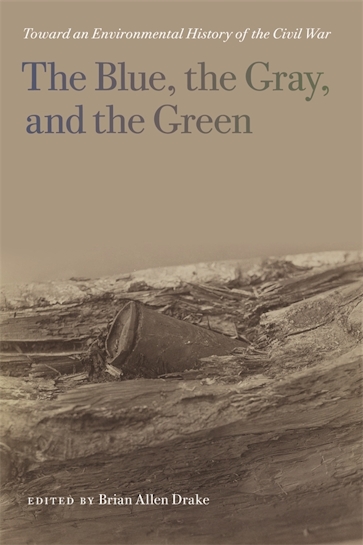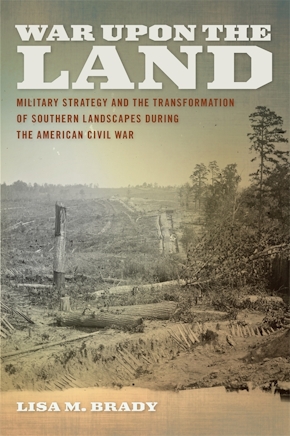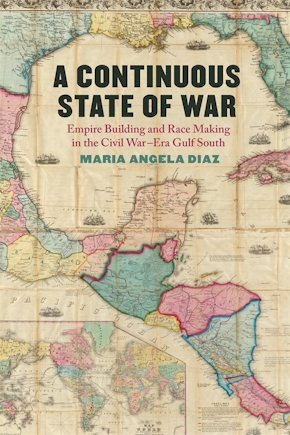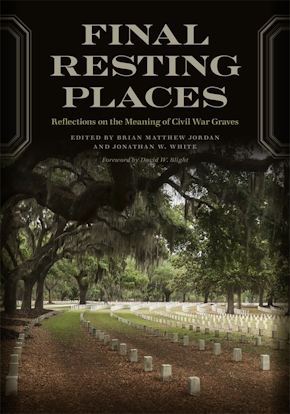The Blue, the Gray, and the Green
Toward an Environmental History of the Civil War
Title Details
Pages: 264
Illustrations: 11 b&w photos
Trim size: 6.000in x 9.000in
Formats
Paperback
Pub Date: 01/15/2015
ISBN: 9-780-8203-4715-8
List Price: $34.95
Hardcover
Pub Date: 01/15/2015
ISBN: 9-780-8203-4714-1
List Price: $120.95
eBook
Pub Date: 01/15/2015
ISBN: 9-780-8203-4775-2
List Price: $34.95
Series
Related Subjects
HISTORY / United States / Civil War Period (1850-1877)
The Blue, the Gray, and the Green
Toward an Environmental History of the Civil War
Using environmental history to understand the Civil War in new ways
Skip to
- Description
- Reviews
- Contributors
The Blue, the Gray, and the Green is one of only a handful of books to apply an environmental history approach to the Civil War. This book explores how nature—disease, climate, flora and fauna, and other factors—affected the war and also how the war shaped Americans’ perceptions, understanding, and use of nature. The contributors use a wide range of approaches that serve as a valuable template for future environmental histories of the conflict.
In his introduction, Brian Allen Drake describes the sparse body of environmental history literature related to the Civil War and lays out a blueprint for the theoretical basis of each essay. Kenneth W. Noe emphasizes climate and its effects on agricultural output and the battlefield; Timothy Silver explores the role of disease among troops and animals; Megan Kate Nelson examines aridity and Union defeat in 1861 New Mexico; Kathryn Shively Meier investigates soldiers’ responses to disease in the Peninsula Campaign; Aaron Sachs, John C. Inscoe, and Lisa M. Brady examine philosophical and ideological perspectives on nature before, during, and after the war; Drew Swanson discusses the war’s role in production and landscape change in piedmont tobacco country; Mart A. Stewart muses on the importance of environmental knowledge and experience for soldiers, civilians, and slaves; Timothy Johnson elucidates the ecological underpinnings of debt peonage during Reconstruction; finally, Paul S. Sutter speculates on the future of Civil War environmental studies.
The Blue, the Gray, and the Green provides a provocative environmental commentary that enriches our understanding of the Civil War.
A valuable collection of essays by an all-star lineup of scholars, this volume will make an important contribution to environmental history and Civil War history. I know of no other collection that explores so deeply and creatively the intersection of these two fields. This pathbreaking book is imaginative, probing, insightful, and full of surprises. It is certain to intrigue environmental and Civil War historians alike and certain to prompt even more inquiry into the event that, more than any other, has defined the history of the United States.
—Mark Fiege, co-author of Republic of Nature
—Theresa L. Young, Civil War Book Review
—Lindsey Peterson, H-Net Reviews
—Gregory J. Dehler, Michigan War Studies Review
—Adam W. Dean, Agricultural History
—Evan A. Kutzler, The Civil War Monitor
—Matthew M. Stith, Environmental History
—Kathryn Morse, Journal of Southern History
Lisa M. Brady
John C. Inscoe
Kathryn "KT" J. Shively
Megan Kate Nelson
Kenneth Noe
Aaron Sachs
Timothy Silver
Mart A. Stewart
Paul S. Sutter
Drew A. Swanson
Brian Allen Drake
Timothy Johnson



